We had planned to camp in Yellowstone, but during this trip we have come to realize that we are camping wimps. We love to camp as long as it isn’t too cold, sunny, buggy or wet! Since it was scheduled to be both cold and wet while in Yellowstone, C encouraged me to go ahead and see if we could find any last minute reservations at the in-park hotels. We were lucky to find a vacancy at the Old Faithful Inn for our first night in the park, and were able to spend just over a day in the area, exploring the Upper Geyser Basin.
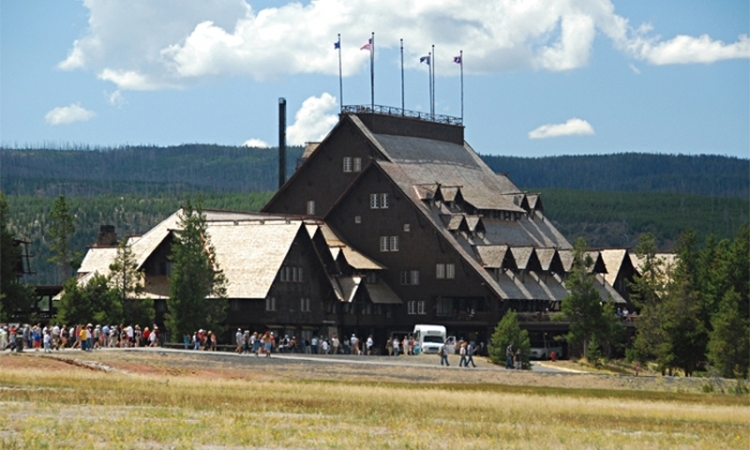
google image photo of the Old Faithful Inn because I didn’t take one of my own
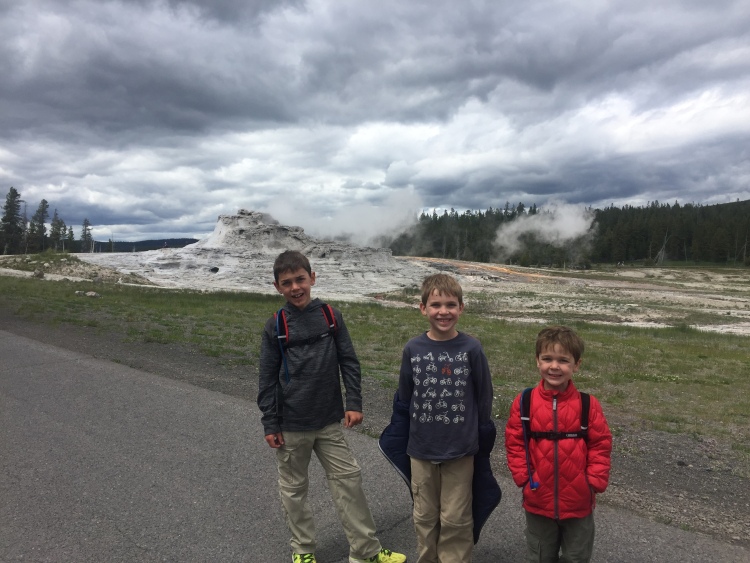
We arrived around 10am and headed straight to the Visitor Center to check Old Faithful eruption times and pick up Junior Ranger and Junior Scientist booklets (this is a rare park where you have to pay ($3) for a Junior Ranger booklet. The Junior Scientist program also cost money ($5), but we were able to check out a backpack filled with cool stuff to use when exploring, so that made it worth it.
We hung around and worked on our booklets at the Visitor Center while we waited for our first Old Faithful eruption (it is approximately every 90 minutes and is located right behind the Visitor Center). The eruption was pretty cool, but it was hard to get too close because of the crowd.
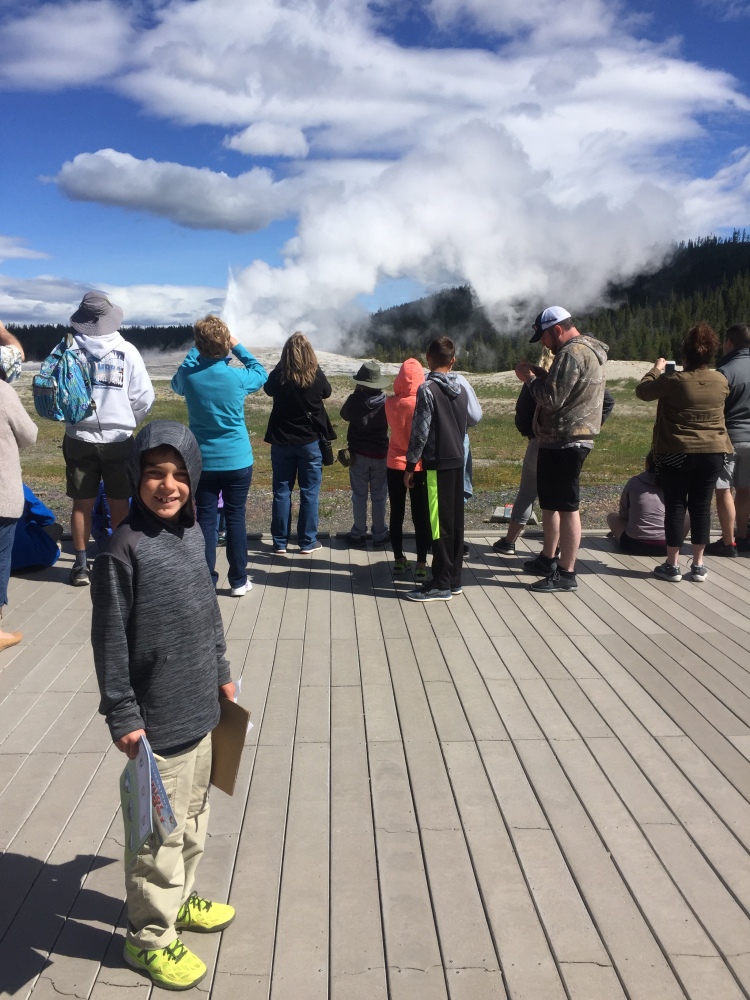
After watching the eruption, we headed for the boardwalks to tour the Upper Geyser basin, an area full of geysers and hot springs. This area has a very large concentration of geysers, at least 150 in one square mile. As you may know, most of Yellowstone is located on the caldera of an enormous, extinct volcano. Though a massive eruption is not anticipated in the near future (1,000 – 10,000 years), there is still heat beneath this area causing these amazing hydrothermal features. The park also gets from 1,000 – 3,000 earthquakes PER YEAR, further demonstrating the activity happening underground.
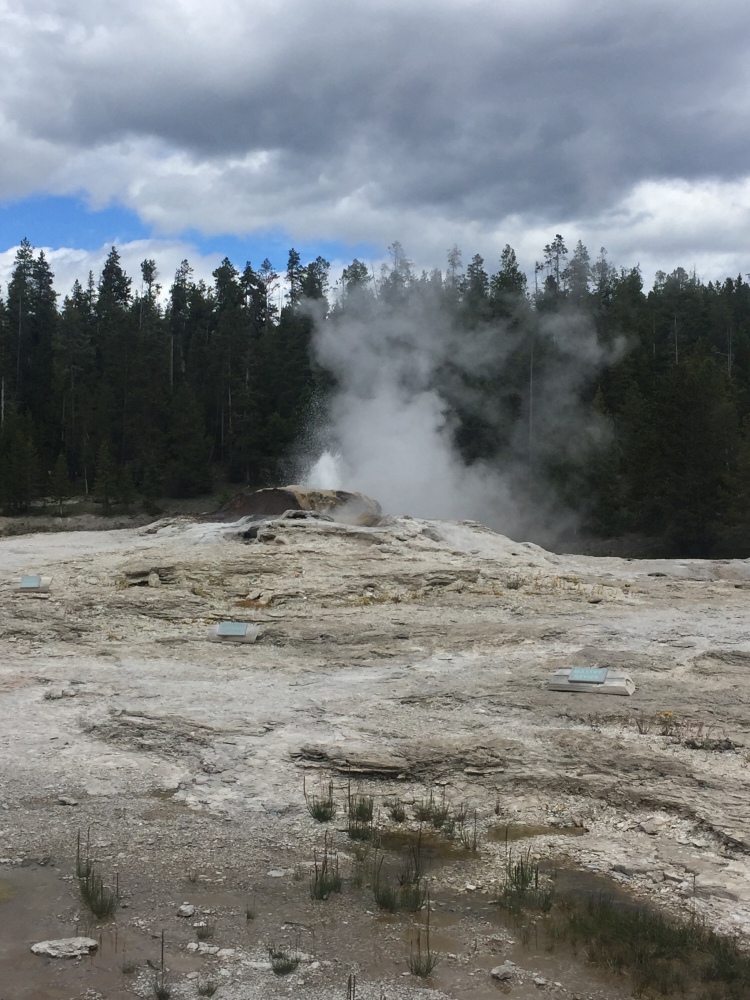
Almost cooler than watching the big geysers erupt was seeing these areas that weren’t even signposted (so basically – nothing special) that were steaming or bubbling. It was those little insignificant spots that remind me that this entire area is special and unique.
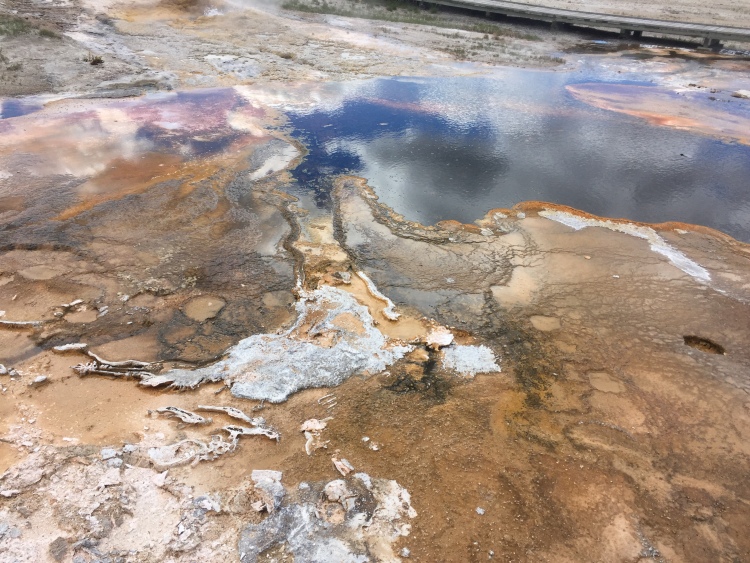
As we walked around, the boys enjoyed using this cool temperate gun from the Junior Scientist backpack. They would aim the gun at a pool of water, and it would tell them the temperature of the water.
Each feature was unique and some of my favorites were the grotto geyser (even not going off). They believe its unique shape is because the sinter that is expelled during a volcano built up over dead tree stumps as the geyer erupted
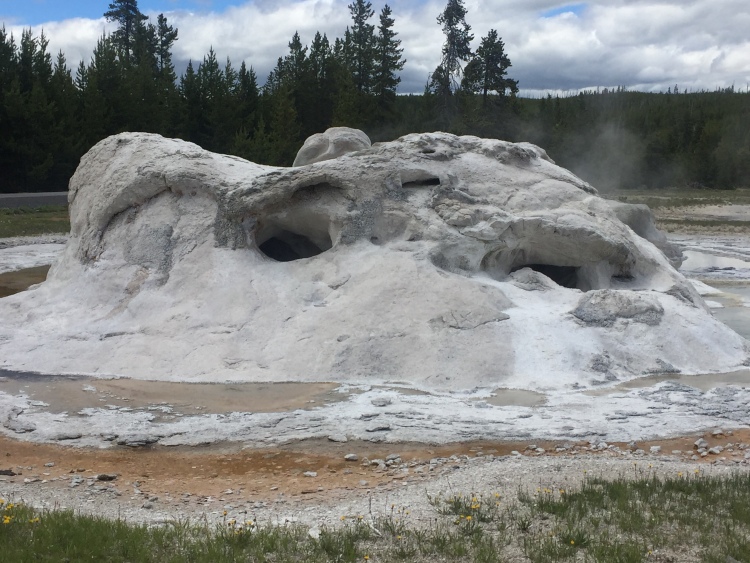
The Grotto Geyser
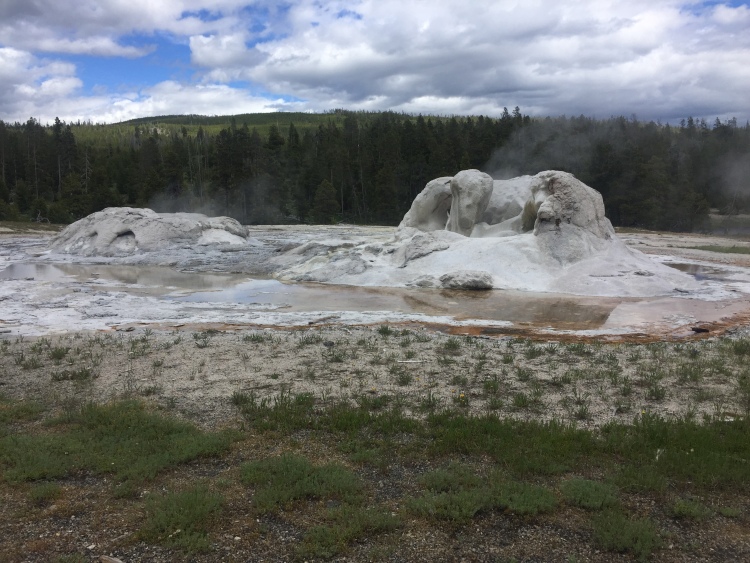
The view from the back of the Grotto Geyser
I also really liked the Belgian Pool. Named as such because, in 1929, a visitor from Belgium fell in “with fatal results” (according to wikipedia). I guess at least he got a hot spring named after him and his fellow countrymen.
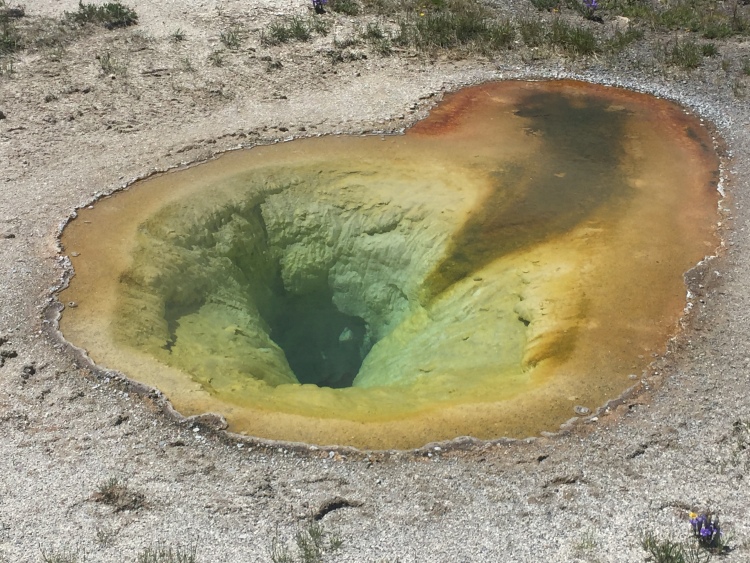
The Belgian Pool
We took the boardwalk all the way to the Morning Glory Pool – a flat, easy 2.8 miles round trip (but the miles pass quickly with so many geothermal features to look at). The Morning Glory Pool was a large, beautiful pool that was orange, yellow and blue in color (yes, similar to the Belgian Pool, but much larger).
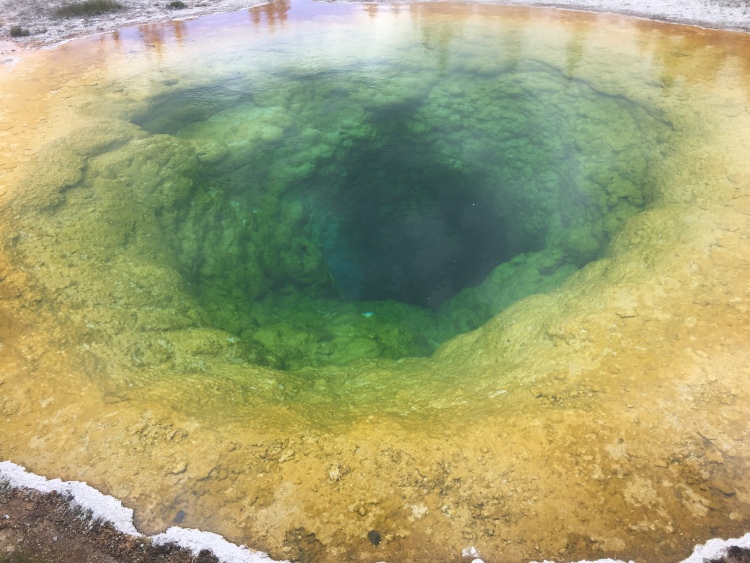
The color is determined by the temperature of the water, and this pool used to be even bluer (hotter), but thanks to people (but of course!) the pool has cooled down. Tourists have frequently thrown pennies, rocks and assorted other garbage into the pool, blocking the heat source beneath the earth’s surface and cooling the temperature. This cooler temperature allows different microbes to grow, which show as different colors in the pool. It was still very pretty, but just a shame to know that people are having an impact on these unique natural features.
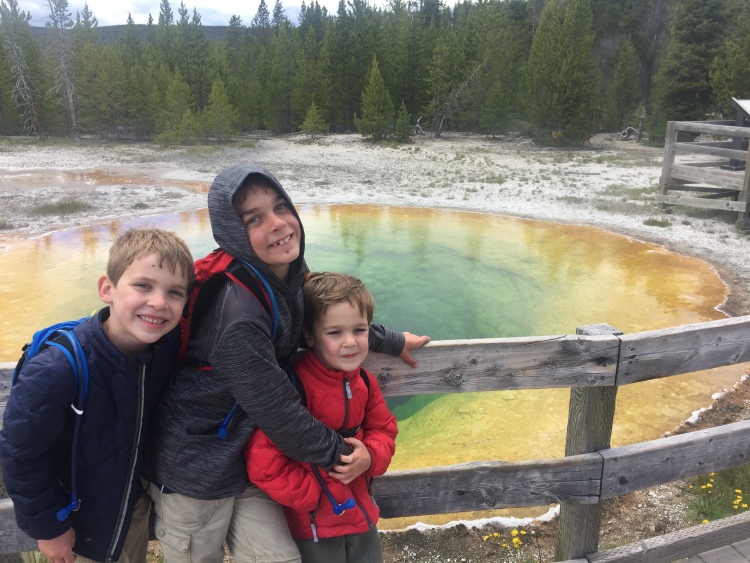
Within the Upper Geyser Basin, there are five geysers (including Old Faithful) that go off at a somewhat predictable interval. At least predictable enough that the National Park Service will estimate, within a window, the time of their next eruption. I was really hoping to catch a big one erupt, but their scheduled times were not until 11pm or later that night. Instead, I chose to go back to the hotel, take a shower (for the first time in a few days!) and sleep in a real bed (again, for the first time in a few days). I figured we could try to schedule our time the next morning, and with a little luck, we could catch one.
So, we got moving slowly the next morning (again – real bed for the first time in a while!), but managed to get to the Visitor Center to check out the scheduled eruption times:
- Old Faithful – 11:40 +/- 10 min (erupts ~ every 90 minutes)
- Grand – 12:45 +/- 90 min
- Castle – 1:30 +/- 45 minutes (erupts ~ every 10-12 hours)
We figured we would see Old Faithful, then head over to the Grand Geyser, in hopes of catching that eruption sometime in its 3 hour (!) window, then either running over to Castle while waiting for Grand or seeing it before/after Grand.
Things went according to plan at the beginning. Old Faithful was, well, faithful in its eruption time at about 11:45. I made the boys stand in front of the sign for ages so we wouldn’t miss our chance to take a picture with the eruption in the background.
After Old Faithful’s eruption, we headed towards Grand geyser, but as we approached Castle geyser, we realized it was already going off – way ahead of schedule! Jackpot!
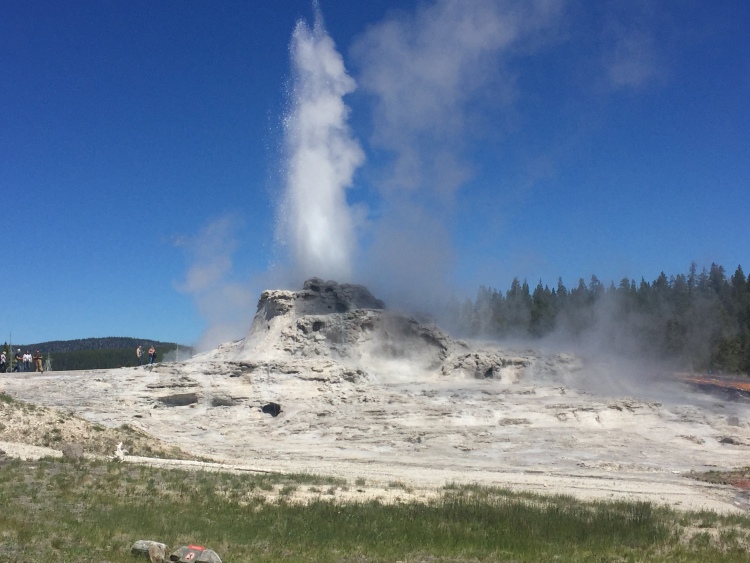
Castle geyser got its name because the large build-up of sinter deposits (the minerals that shoot out of the geyser and slowly build up on the outside of the geyser) that resembles a castle with turrets. Interestingly, Castle used to have irregular eruptions until a large, devastating earthquake hit the Yellowstone area in 1959.
The geyser erupts for about 20 minutes, and I think we hit it near the beginning, so we got a chance to watch it for a while and take plenty of pictures 😉
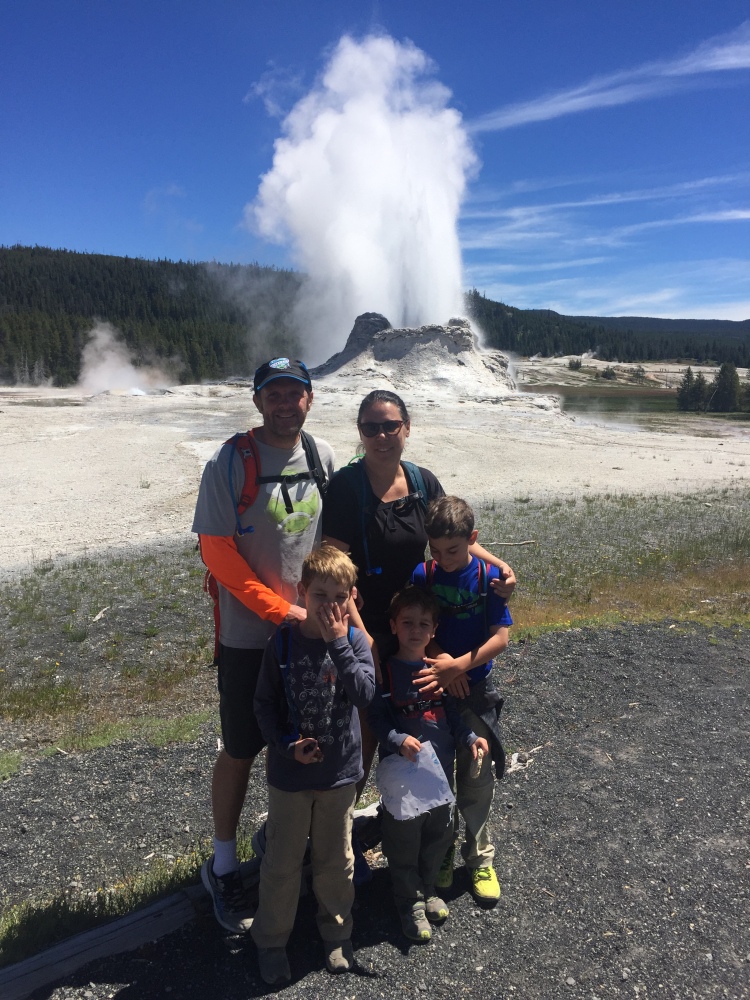
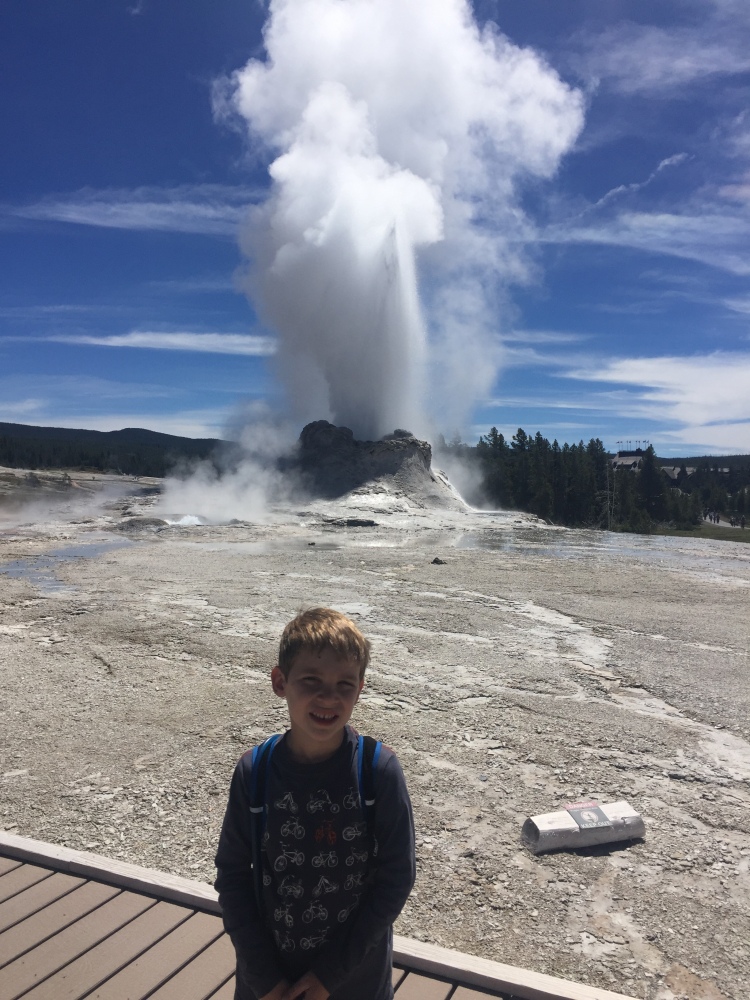
A nice view of Castle Geyser – it looks most castle-like at this angle
After getting our fill of the Castle Geyser, we headed towards Grand Geyser, looping through to take a look at my favorite Belgian Pool, as well as a pretty cool Spasmatic geyser – named (I think) from the constant random sort of gurgles it lets off.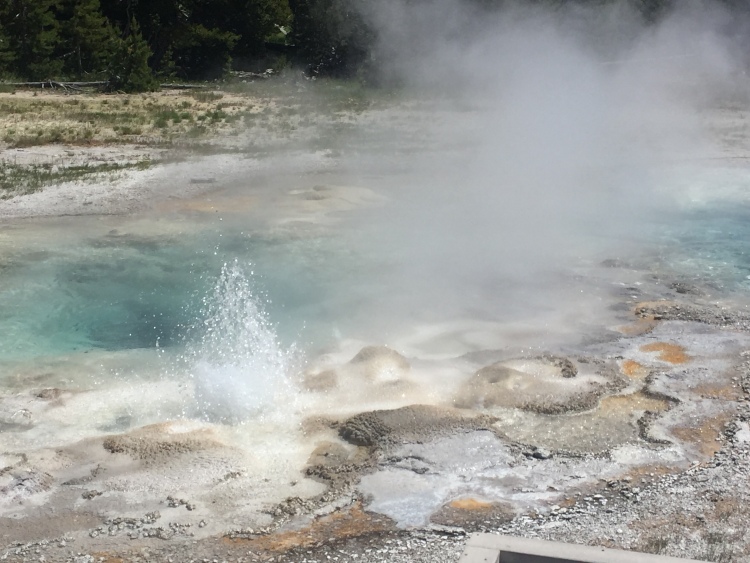
However, we seemed to have dilly-dallied too long – suddenly Grand Geyser started to erupt! Jackpot again! We hit the 3-hour eruption window just right!
Grand geyser is so named because it is the tallest predictable known geyser. Its fountain can go as high as 200 feet, though lately doesn’t go higher than 150 feet. Still – good enough for us!
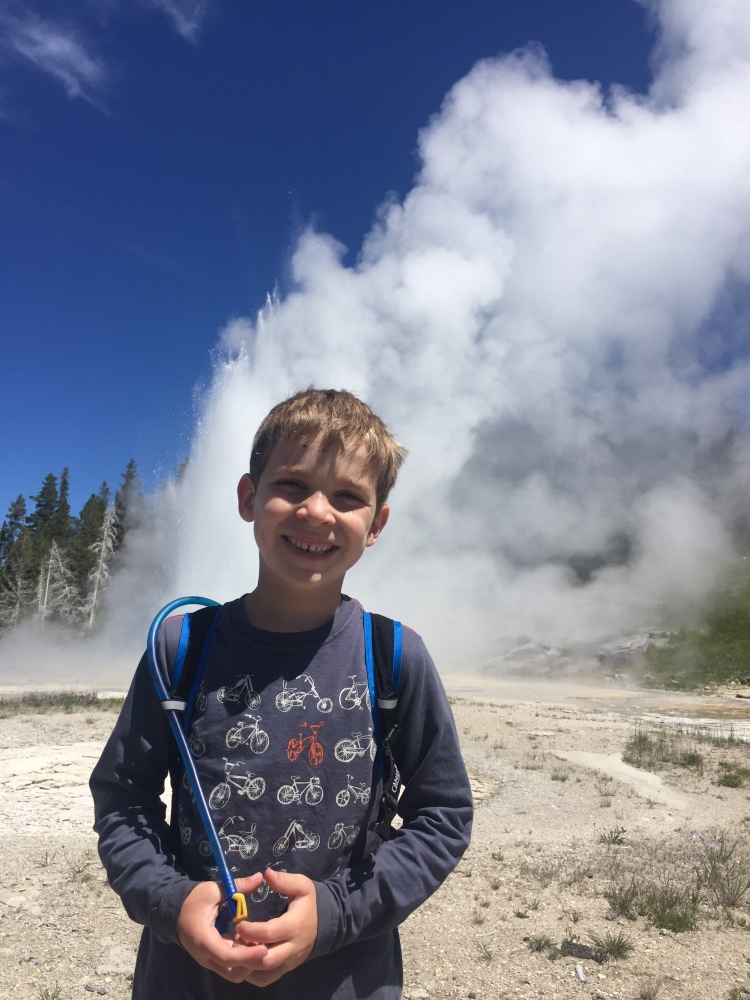
The geyser erupts, on average, every 7 – 15 hours, and only erupts for about 10 minutes. See why we were so excited to get all of these geysers consecutively? Within an hour, we got to see three amazing geysers go off.
We sat and watched the show for a few minutes.
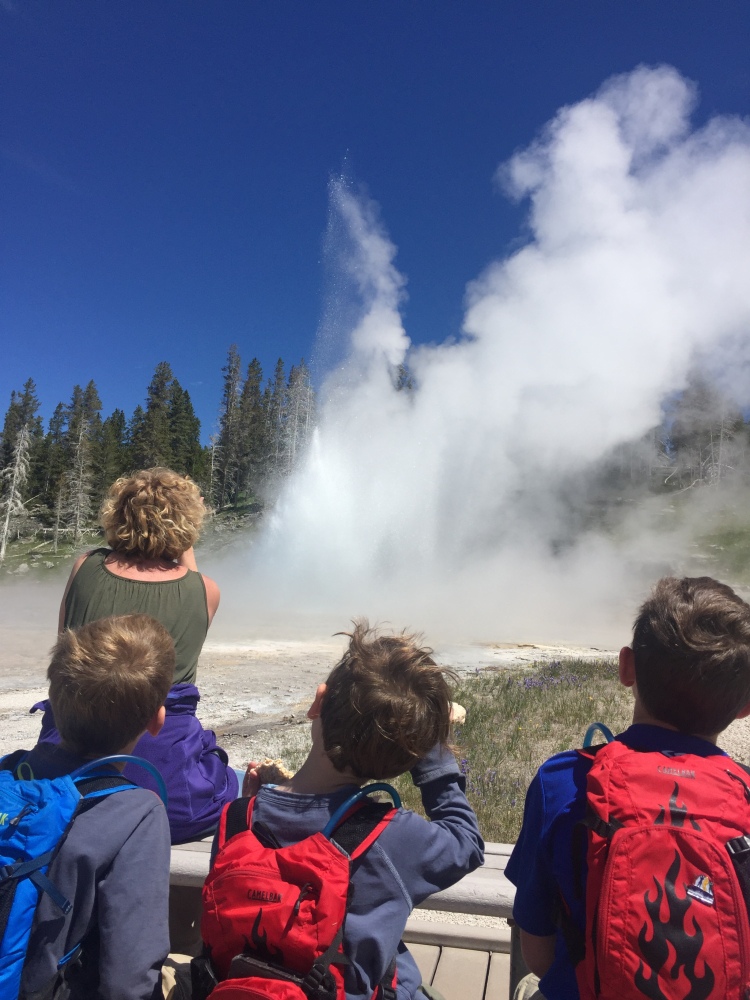
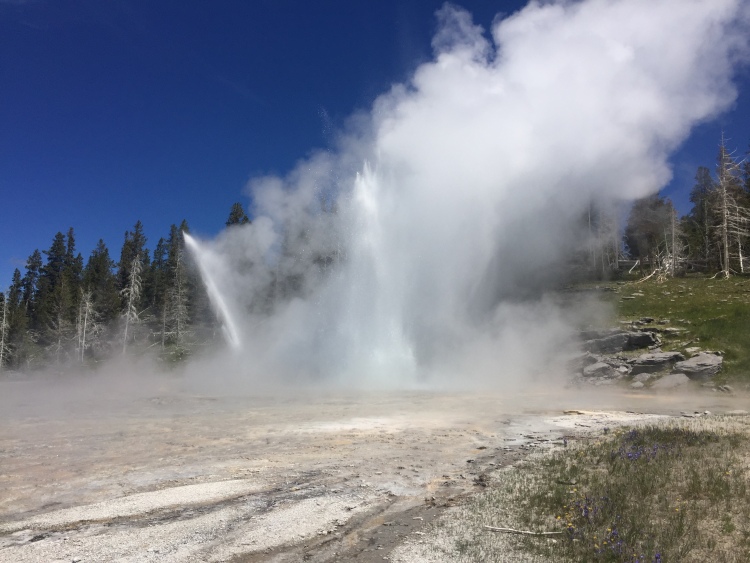
Cool – another geyser erupts in the steam of Grand
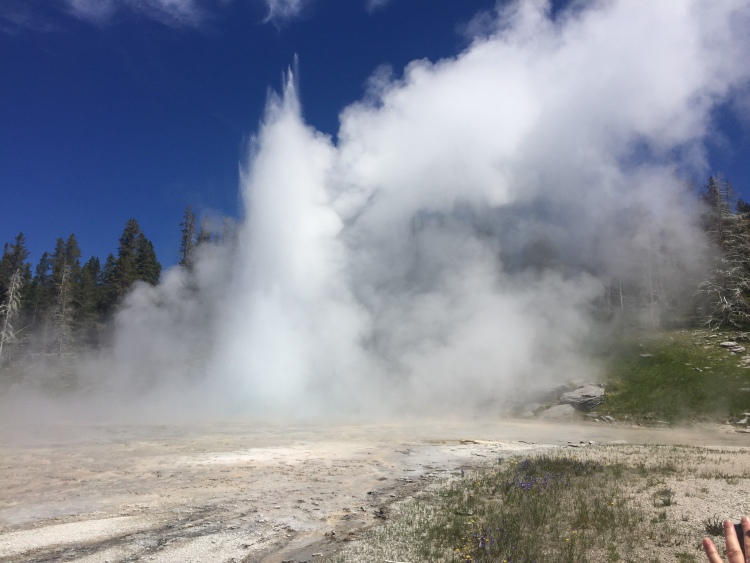
Knowing we couldn’t do much better than this trifecta of geyser eruptions, we quit while we were ahead, and took off to explore more of Yellowstone!


